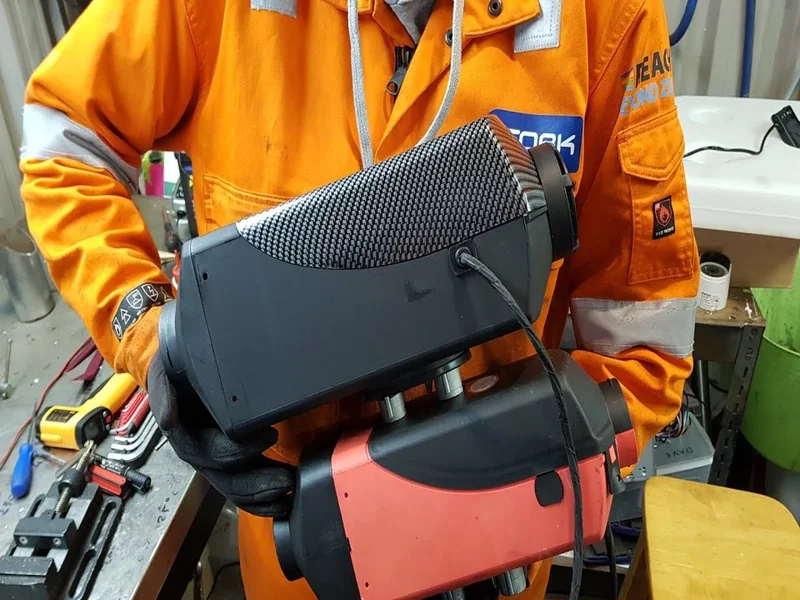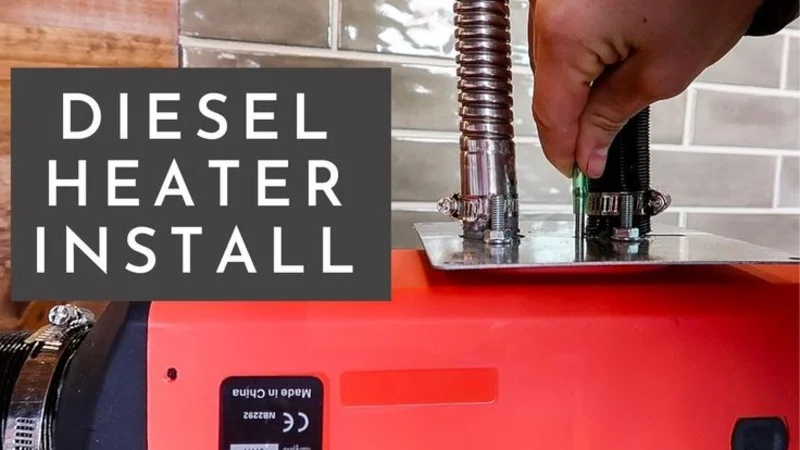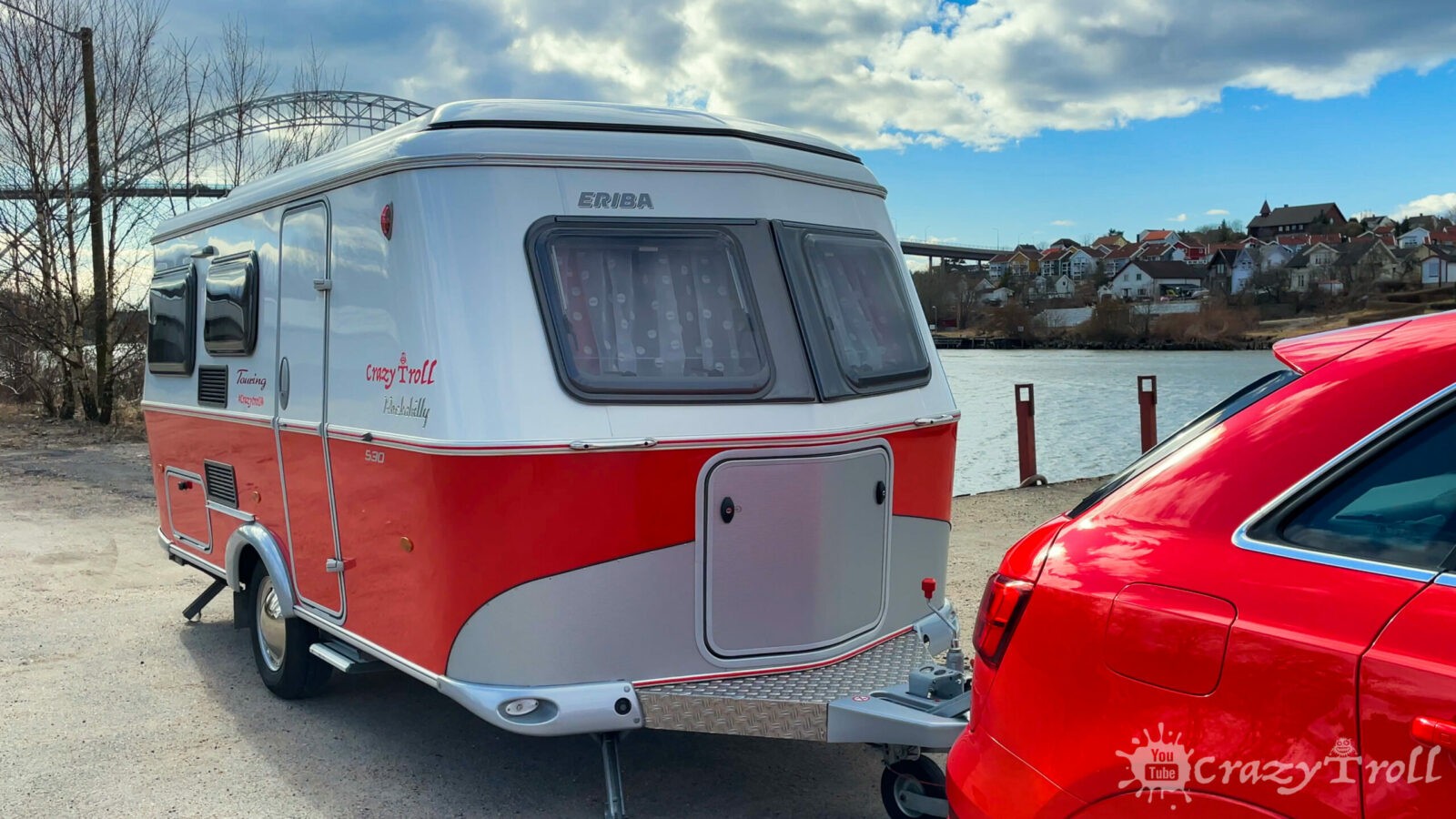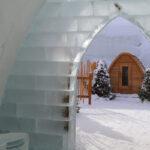With the dreaded winter season fast approaching, many campers are faced with the prospect of freezing or near-freezing temperatures in their vans. Without a way to keep temperatures warm and comfortable, campervans can become almost inhospitable.
Fortunately, this is a well-known issue, and there are fixes available on the market. For example, take diesel heaters. These nifty little devices were made with vans in mind and are designed specifically to help make the winter more bearable.
With very little fuel and electricity consumption, diesel heaters can give off a surprising amount of warmth and help make your van a cozy little abode for those dark winter nights. Moreover, with the help of modern technology, these devices are convenient and easy to use, in most instances, with the touch of a button.
Until recently, however, these heaters would cost you a pretty penny; this was because most diesel heaters were manufactured in Germany, a country renowned for their high quality and even higher prices.
Recently, China has entered the arena to challenge Germany’s dominance over the market for diesel heaters. In typical fashion, Chinese diesel heaters are comparatively lower quality but also significantly cheaper.
In this article, we shall go over the types of Chinese diesel heaters on the market and instructions on how to set them up and use them safely. By the end, freezing nights while boondocking in your campervan will have hopefully become a problem of the past!
Types of Chinese Diesel Heaters

Generally, most diesel heaters have a similar design and operation; however, you should be aware of a few essential distinctions between heaters. Depending on your circumstances and requirements, you may prefer looking for one type of heater over the other.
The Fuel Type
As the name suggests, diesel heaters run on, well, diesel. However, diesel is not the only fuel they can consume. Many heaters can also consume kerosene, gasoline, and some types of oils; this is an important consideration for maintenance and ease of use.
For example, if your van runs on gasoline and not diesel, you may want to get a heater that can use gasoline; this will make topping off the heater’s fuel much easier as you can do that whenever you refuel your van.
Moreover, another fact to consider is maintenance. Diesel is a heavy fuel that leaves behind a lot of residue as carbon. To counteract this, diesel heaters require regular and thorough cleaning to ensure proper function. On the other hand, kerosene is a much lighter fuel and leaves behind very few residues.
Thus, if you particularly hate doing maintenance, it might be preferable for you to buy a diesel heater that has the option of also running on kerosene. Hence we recommend that you thoroughly consider your circumstance and preferences before deciding which fuel you would like to use in your heater. After you have done this, you should get a model of diesel heater that supports your selected fuel type.
2KV vs. 5KV
One of the most important considerations is the strength of the heater. Generally, there are two standards on the market, although some exceptions do exist. You can find diesel heaters in two-kilowatt or five-kilowatt considerations.
As the names suggest, the 5KV is the bigger and stronger option while the 2KV is smaller. But, generally speaking, a 2KV system is appropriate for most circumstances. This is because you can always turn a diesel heater’s heat setting up by a few notches, making the space warmer.
In comparison, a 5KV system’s minimum setting may even end up being too much and heating the van beyond comfort levels. Furthermore, it is also worth noting that a bigger heater has other apparent downsides as well.
Firstly, the larger heater will require more space which may be difficult to arrange, particularly if you plan on setting your heater up below your seat or somewhere it will not be an eyesore.
Secondly, the 5KV system will require more electricity and fuel to run. Not only will this increase running costs, but you may also need more frequent refills.
Thirdly, the more extensive system will produce significantly more carbon monoxide, which is not generally a problem as it is all vented, but the lesser, the better.
Finally, a 5KV system will cost significantly more than its 2KV counterpart due to its higher capacity and bigger size.
There are, however, a few circumstances in which getting the bigger diesel heater will be the better option. Firstly, if your van has poor or no insulation, it might be worth it to get a 5KV heater as this will help counteract the heat lost to the environment.
Secondly, if you have a huge camper van, it may also be worth considering a 5KV diesel heater.
The Altitude
Depending on the altitude you are at, the density of the atmosphere changes. This leads to commonly experienced phenomena such as altitude sickness. A type of ‘altitude sickness’ also affects diesel heaters. Although, more broadly, it affects every kind of combustion reaction.
Since a combustion reaction requires air from the atmosphere to be carried out, it can be susceptible to changes in air density brought about by an increase in altitude. Due to this, it is essential to think through what altitudes you will be operating at.
Most diesel heaters on the market work perfectly fine at sea level and slightly above. However, for more extreme altitudes, they usually require an adapter kit, or you need to purchase a diesel heater specialized for operation at high altitudes.
Thus if you expect that you will be traveling to mountain tops and the like in your camper van, we highly recommend doing some research into the altitudes of those areas and what the model you are considering buying is capable of.
One thing to note here is that accurate and authentic information on Chinese diesel heaters is sparse, and much of what is claimed by the manufacturer may be fabricated. Thus we recommend that you instead look over forums, social media groups, and blogs specialized in diesel heaters to get input from actual users of these devices before making your decision.
How much fuel does a diesel heater consume?
All of the diesel heaters are equipped with piston-type fuel pumps to inject fuel into the system. These pumps are designed for oily fuel like diesel and kerosene and have a fixed volume of fuel pumped per circle. In Chinese diesel heaters, it is called pulse and is used as the main setting for power modes. The pulse is measured in Hertz and defines the number of pump cycles per second.
The volume of the fuel pump is normally between 0,020 ml and 0,023 ml and can be found on the pump itself or in the manual. The find the consumption for each power mode you have to use the volume of the pump and multiply 60 for consumption per minute or 360 for hour consumption.
In this table, you can find typical 2kW Chinese diesel heater consumption per minute and per hour for each mode.
| Power Mode (Pulse) | Consumption per minute | Consumption per Hour |
|---|---|---|
| Low (2 Hz) | 0,0024 ltr/minute | 0.144 ltr/hour |
| Medium (3 Hz) | 0,0036 ltr/minute | 0.216 ltr/hour |
| High (4 Hz) | 0,0048 ltr/minute | 0.288 ltr/hour |
| Boost (5,5 Hz) | 0,0066 ltr/minute | 0.396 ltr/hour |
How long will a diesel heater run on a gallon or a liter of fuel?
Using the consumption table above you can easily calculate how long you can run your heater on the full tank or remain fuel in the tank and adjust accordingly. Most commonly diesel heaters are supplied with 10L or 2.64-gallon tanks, that last pretty long with such low consumption. It is very easy to calculate how long will one gallon of fuel will last in any power mode.
2kW diesel heater will run for 26,25 hours on a gallon of fuel and about 7 hours on a liter of fuel at Low power mode. Here is a consumption comparison table for all power modes of a 2kW Chinese diesel heater.
| Power Mode (Pulse) | One Gallon Running time | One Liter Running time |
|---|---|---|
| Low (2 Hz) | 26,25 hours | 6,94 hours |
| Medium (3 Hz) | 17,39 hours | 4,63 hours |
| High (4 Hz) | 13,05 hours | 3,47 hours |
| Boost (5,5 Hz) | 9,49 hours | 2,52 hours |
How to use a Chinese Diesel Heater
How to Prep
The first step before installing the heater is prepping the area you have chosen as the spot for your device. Generally, most heaters will come with a mounting bracket included in the package.
Unfortunately, however, most of these mounting brackets are low quality and useless when it comes to Chinese heaters. Therefore, you will be better off throwing them out. Instead, you should purchase a turret plate.
This plate is significant if the base of your van is wood as it can prevent heat from being transferred to the wood. Without this plate, there would be a risk of wood burning or catching fire, which, as you can imagine, would not be the best of situations.
If the surface where you intend to put the heater is uneven, the turret place is also beneficial as it provides a flat base for the heater to rest on. Without a flat surface, there is a chance that the heater will be unstable and might lead to certain parts breaking over time.
Once you have acquired the turret plate, the next step is to cut a hole in the base to mount the container. In the instance that this cannot be done, you can also screw the plate in.
Once this has been done, you can proceed with bolting down the heater to the chosen location. Again, you must have a secure attachment between the plate and the heater. Otherwise, there is the risk of damage, particularly when the van is moving.
Another thing to prepare for is the fuel tank. For obvious reasons, this should be attached to the outside of your van if possible. Generally, the shape that comes with the heater may not be suitable for your needs as these tend to be rather long. However, if this happens to you, you can order another one online as long as it will fit the tubing that came with your heater.
How to install

Once you have found a place for and attached the fuel tank, the next step is to connect all the hoses. There will be two inlets leading into the heater, one of these will be for air, and the other will be for fuel. Each heater model is different, so you will need to consult your manual to differentiate between the two provided hoses.
With the provided clamps, you can ensure that the correct hoses are connected to the proper inlets. Moreover, the connection needs to be secure and airtight. The last thing you want is fuel or exhaust gases leaking into your van and endangering your safety.
One more thing to note is that there are two additional components that you will need to attach to the fuel line. Once more, you will need to consult your manual to see what they look like and ensure that they have the correct orientation.
As the name suggests, the first is a fuel filter; it cleans the fuel before it goes for combustion within the heater. The second item is a fuel pump; once more, as the name suggests, this is the pump that pulls fuel into the heater for combustion.
Both components must be attached in the correct orientations to the fuel line; otherwise, there is a risk of malfunction. Thus, double-checking is highly recommended!
How to ensure safety
Any item that uses combustion as a part of its function has certain risks attached to it. Whether it be an engine, heater, or stove, this is all down to carbon monoxide production as a by-product of a combustion reaction.
Carbon monoxide is essentially a gaseous poison for most living things as it can lead to death in even relatively benign concentrations. Moreover, this gas is invisible and without an odor; thus, one could not even realize that they are being poisoned.
Due to this fact, it is essential to take adequate safety precautions when operating a diesel heater inside your van. The way to do this is by double-checking all hoses and connection points and having a carbon monoxide detector for your rv. For example this one from Amazon.
Ideally, this should be attached close to where you will be sleeping as carbon monoxide concentrations can be localized. Thus you want to make sure that it does not gather up around you while you are asleep. In case it does, the detector should alert you before concentrations reach a dangerous level.
Moreover, you must carry out regular maintenance and inspections of the detector as the last thing you want is an improperly functioning safety device.
Chinese Diesel Heaters – A Few Common Pitfalls
Although Chinese diesel heaters are significantly cheaper than the competition from Germany, this does mean a decrease in quality as well. As a result, there have been frequent complaints by users of these Chinese heaters. We will go over a few of the most common ones to be aware of potential issues well in advance.
Missing Components
This is one of the most notorious issues with Chinese diesel heaters. Due to poor quality control or on purpose, many of the kits do not come with all the parts listed on the box. This ends up meaning that consumers often have to search for aftermarket components to fill in the missing blanks of the kit.
Not only is this a waste of time and money, but it can be incredibly frustrating to find the specific compatible part, mainly if there are not a lot of hardware stores nearby.
One thing you can do to avoid this problem would be to check forums and reviews on the sales website. These should provide a good litmus test about how reliable the manufacturer is in terms of quality control.
Another good piece of wisdom is to never go for the cheapest available product. These may be lower standards or leftover materials that did not make the cut. Instead, choose a mid-range Chinese diesel heater to maximize the chances of workable quality. Even a midrange heater will be much cheaper than low-end German options.
Misleading/False branding and marketing
The internet is full of numerous stories of heaters turning out not to be what they were promised. Sometimes the KiloWatt capacity delivered is not what was mentioned; other times, the product is different from the image altogether.
The best way to counteract such products is to avoid buying them altogether. To do this, we recommend talking to someone online or in-person, who has purchased a Chinese diesel heater before.
Moreover, you can always post on a forum or group asking people for recommendations or mentioning your choice and asking if it is reliable. The collective wisdom of all can easily trump any amount of research done by one individual.
Another option is to read through articles such as this for recommendations on which heaters are the best in terms of quality. We have a list to help you with exactly such a situation.
Recommended Chinese Diesel Heaters
maXpeedingrods 5KW 12V Air Heater (2.0 Upgraded: Bluetooth App & Remote Control)

The maXpeedingrods is a reliable device that has a few strong qualities over competitors. Firstly, there are a lot of quality-of-life features that make it easy to operate.
For example, there is the addition of a small LCD screen for control and a fuel sensor that displays the remaining fuel quantity in real-time on the screen. This will help ensure you are never blindsided by the device running out of fuel. Upgrades of the maXpeedingrods to 2.0 have brought Bluetooth apps that made remote control even easier.
Secondly, this heater is not too picky when it comes to the choice of fuel either. Although it is designed for diesel, it can also run on gasoline or fuel oil. This can help you in a pinch if you cannot find diesel. Moreover, it can also make trips to the fuel station quicker if you use the same fuel for your van and heater.
Moreover, this heater has a relatively small form factor compared to other devices on the market, measuring only 15.35 x 6.02 x 6.34 inches. This makes it relatively easy to fit into small spaces in your van. Thus adding flexibility to your placement choice.
Another thing that we like is the addition of a couple of safety features. For example, the heater has a built-in temperature sensor that immediately shuts the device down if it starts to overheat. Thus, although the heater has a relatively wide range of operating temperatures, it is unlikely to overheat unless something is malfunctioning.
The product page advertises the heater as red; however, consumers have reported receiving it in black and orange-red. Fortunately, this is a minor cosmetic issue, and the product tends not to be missing critical functional components.
Here is the Full range of upgraded maXpeedingrods diesel heater to 2.0 that comes with Automatic Altitude Compensation and are now fitted not only for heating but venting your RV or boat.
ZHIBANG 12V 8KW Diesel Air Heater

Another solid offering, the ZHIBANG Air Heater, has a larger capacity than the previous heater, coming in at 8KW. This makes it suitable for larger vans or situations requiring a high heating volume, such as frigid temperatures or a vehicle with poor insulation.
Moreover, what is surprising is that this heater is still essentially almost the same size as the last one despite a larger heating capacity, coming in at 5.7 x 5.7 x 15.2 inches. It has a fuel tank with a 10-liter volume that can hold enough fuel for 18-20 hours of running. However, this can vary a bit depending on the external temperature. Another thing worth noting is the relatively broad range of temperatures this device can operate at. From -40 to +122 degrees Fahrenheit (-40 to +50 deg.C), this heater is likely going to be able to take on any weather you throw at it.
Similar to the previous heater, this device is also controlled by an LCD screen, making the entire process much more straightforward and user-friendly. Moreover, a remote control provides additional flexibility, allowing you to turn the heater on before entering the van or without leaving the bed.
Finally, it is worth noting that this is a very versatile heater as well. Although it is designed to use diesel (it is a diesel heater, after all), this product can also use gasoline and kerosene to operate. This means that no matter what fuel your van uses, your heater can likely use the same fuel, thus greatly simplifying trips to the fuel station.
Thus overall, this option seems to be geared toward power users looking for a device that is stronger in terms of its heating ability and versatile when it comes to operation.
Conclusion
Like all do-it-yourself projects, it takes a lot of effort and research to figure out the best way of adding a heater to your van. Moreover, given that this device uses combustion, it is imperative to get it right the first time lest you risk your safety from an improperly set up heater.
Fortunately, there are plenty of resources, such as this, and people available online whom you can refer to for help with this process. We wish you the best of luck on your journey and hope your Chinese diesel heater gets to you without too many missing components! As for figuring out which model to pick, the best way is to list the specifications you need and then research models that fit that description. There are plenty of high-quality heaters available at affordable prices, and you’ll be sure to find yours in no time.
Here is the latest bestseller on Amazon to consider before making your final decision:
- Installation-free Solution: Enjoy efficient heating with our diesel heater all in one that requires no installation, making it perfect for outdoor adventures like camping. Heater Power: 8 KW; Rated Voltage: 12 V. Applicable Range: 215-269ft²/20-25 m². Within just 10 minutes, our innovative sandblasting aluminum heat exchanger ensures rapid and efficient heat transfer, ensuring a comfortable temperature inside your vehicle, boat, or cabin.
- Phone=Controller: Our latest upgraded diesel heater features enhanced Bluetooth control for even greater convenience. Simply download the app and gain control to preheat your heater from a distance of up to 98 ft/30 m. And it also comes with a 32 ft/10 m remote control and LCD; choose your convenient control method. The temperature can be adjusted from 46.4 °F-96.8 °F/8 °C-36 °C, catering to your specific needs.
- Automatic Altitude Compensation: VEVOR diesel air heater is equipped with automatic altitude compensation, making it suitable for altitudes up to 18,045 feet/5,500 meters. It adjusts its operation based on the altitude, so you don't have to manually control it. Enjoy seamless heating performance even in high-altitude environments.
- Low Energy Consumption & High Output: Save on fuel costs with our protable diesel heater's precision low-noise fuel pump, consuming around 1 gallon per night and reducing fuel consumption to a range of 0.16-0.62 L/h. With a 5 L/1.3 gal large capacity fuel tank, the diesel air heater can provide continuous heat for up to 8 hours, maximizing fuel efficiency and minimizing energy waste.
- Secure and Reliable: Our 12V diesel heater features a high safety system, allowing for hassle-free usage in various environments such as cars, RVs, ships, and indoors. It provides constant temperature control, timing function, voice broadcasting, preheating, and overheating protection at ≥518 °F/270 °C, ensuring a secure and comfortable experience throughout the night.










